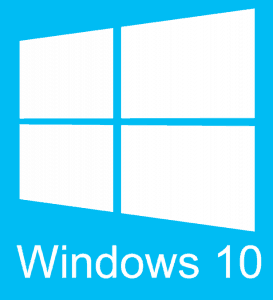
The Creators update adds several new features to Windows 10, in addition to bringing about some performance improvements. However, there are issues with the Creators update. Many Windows 10 users have complained about various networking issues after installation, some of the networking issues that users have faced include:
- unable to connect to WiFi network
- slow internet speeds
Here are some quick fixes to resolve WiFi issues related to connectivity in Windows 10 Creators update.
Fix for WiFi connectivity in Windows 10 Creators update
Using the Network Adapter Troubleshooter in Windows 10
Windows 10 provides a troubleshooting tool to fix common issues, this tool may come in handy when you try to fix WiFi issues. Here are the steps you need to follow:
- Open Settings
- Click Update and Security > Troubleshoot
- Select Network Adapter and click the Run the troubleshooter option
- On the next screen, select WiFi
- Click Next
Let the troubleshooter do its work and wait until the process is complete. In most cases, the troubleshooter will fix your WiFi issue.
If the troubleshooting option does not work, you need to reset the WiFi adapter by following the steps given below.
Reset the WiFi adapter in Windows 10
- Open Settings
- Click Network & Internet
- Click Status
- Click Network reset link
- Click Reset Now button
- Click Yes to confirm
- Click Close and restart your computer
Fix slow Internet problem in Windows 10 Creators update
The Windows PowerShell is a powerful tool to fix issues with configuration management. You can use the command line in PowerShell to fix slow Internet problems. Here are the steps to follow:
- Press Windows Key + X on the keyboard
- Select Windows PowerShell (Admin)
- At the command line, type the following– netsh int tcp set global autotuninglevel=disabled
- Press Enter key
If the above troubleshooting steps do not solve the problem, the QoS settings might be the cause. This can be fixed by making some changes in the Local Group Policy Editor. Here are the steps to follow:
- Press Windows key + R on the keyboard to launch the command prompt window
- Type gpedit.msc at the command line
- Press the Enter key
- On the left side, expand Computer configuration
- Click windows settings
- On the right side, right-click Policy-based QoS
- Select Advanced QoS settings
- Select the Inbound TPC Traffic tab
- Check the option –Specify the inbound TPC throughput level
- Select Level 3 (maximum throughput)
- Click OK
If the WiFi connectivity and the Internet speed problem is not fixed with the above troubleshooting methods, your computer might not have up-to-date Network Drivers.
You can either download a Driver Update Tool to automate your Driver updates, or you can manually update your Drivers using the method below:
- Download the latest Network Drivers from manufacturer website
- Extract the Drivers to an empty folder on desktop
- Press Windows key + X to open Power User menu
- Select Device Manager
- Expand Network Adapters
- Right-click on the WiFi adapter in the list and select Update Driver software
- Click Browse my computer for driver software
- Click Browse to locate the adapter driver on your desktop
- Check Include subfolder option
- Click Next
Wait for the computer to install the latest drivers. After the latest drivers are installed, restart the computer. Your issues should be resolved, if not, try using a Driver Update Tool to run a scan of your PC and check for missing or outdated Network Drivers.
Automatic driver update tools offer many benefits, the most important ones being:
- You can update device drivers automatically
- The software scans and updates all outdated or missing drivers at one go
- The tool picks the right drivers for your device and operating system, so you won’t have to worry about installing an incorrect driver by mistake
- Automatic driver updates are 100% safe
Driver Updater is one of the best driver update tools out there. Outbyte Driver Updater will give you access to a database of over 1 million drivers. It will regularly scan your PC, suggesting new driver versions to install. Driver Updater contains drivers for a variety of Windows devices. With just one click, you can update drivers in your system.
Step 1
Click here to Install and launch the app
Step 2
Scan all devices
Step 3
Install or update drivers automatically

Leave a Reply